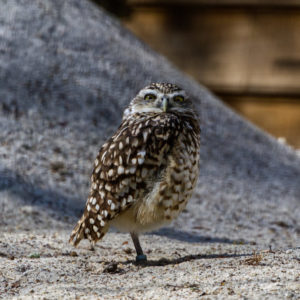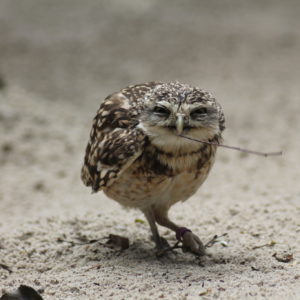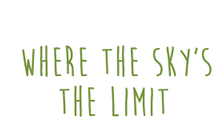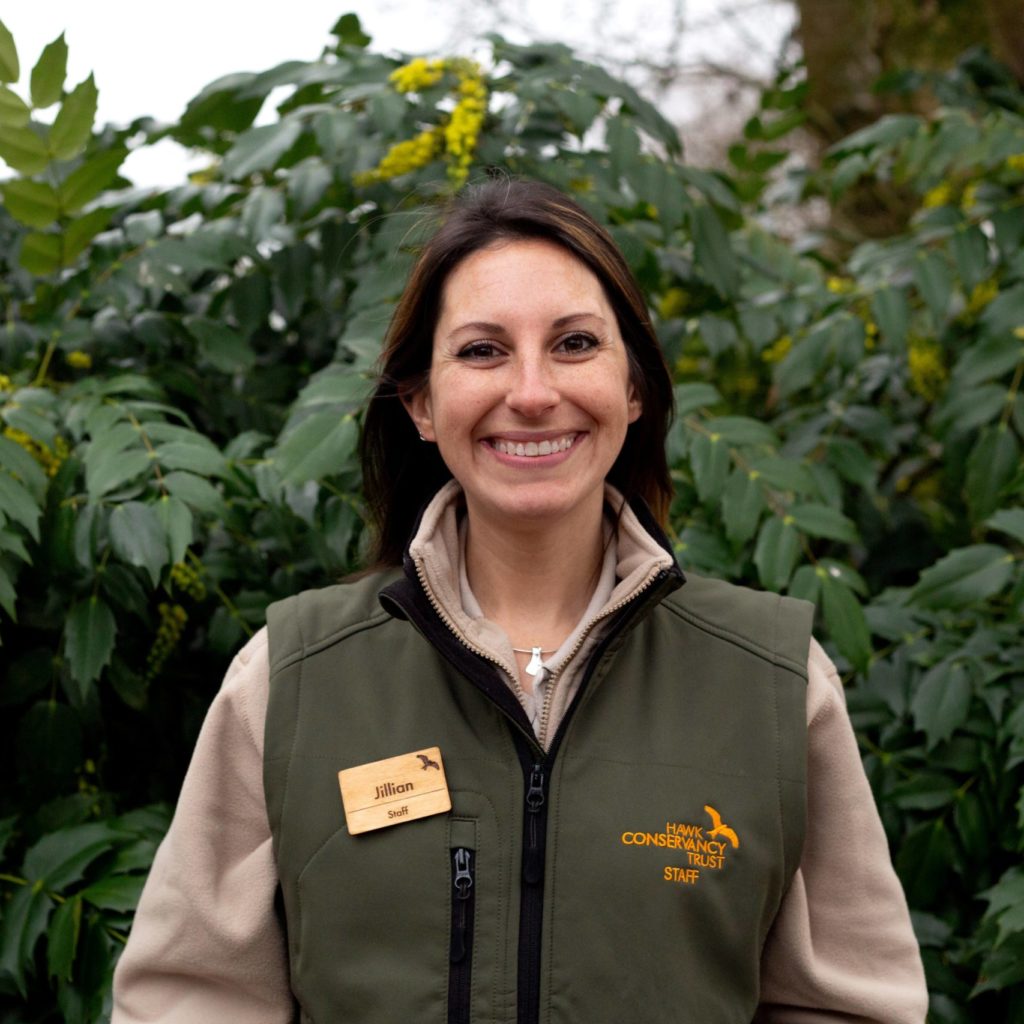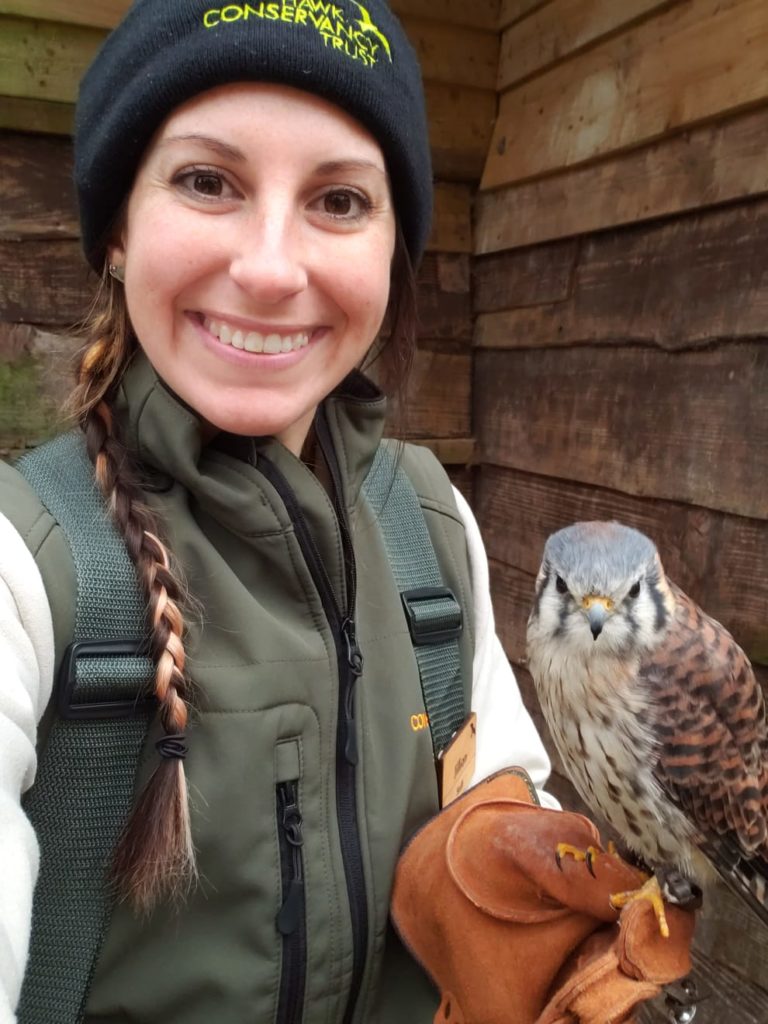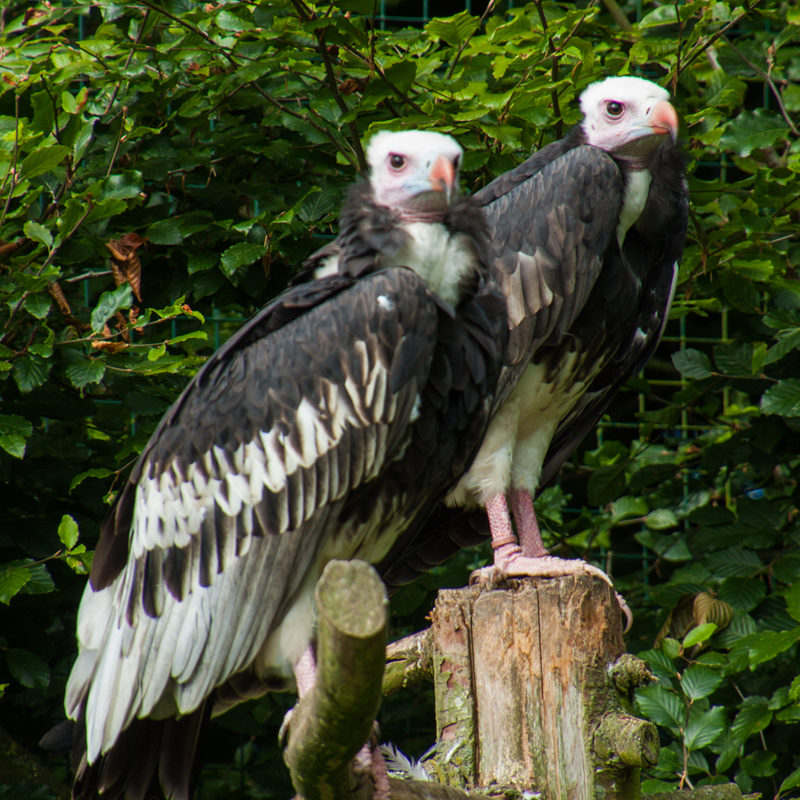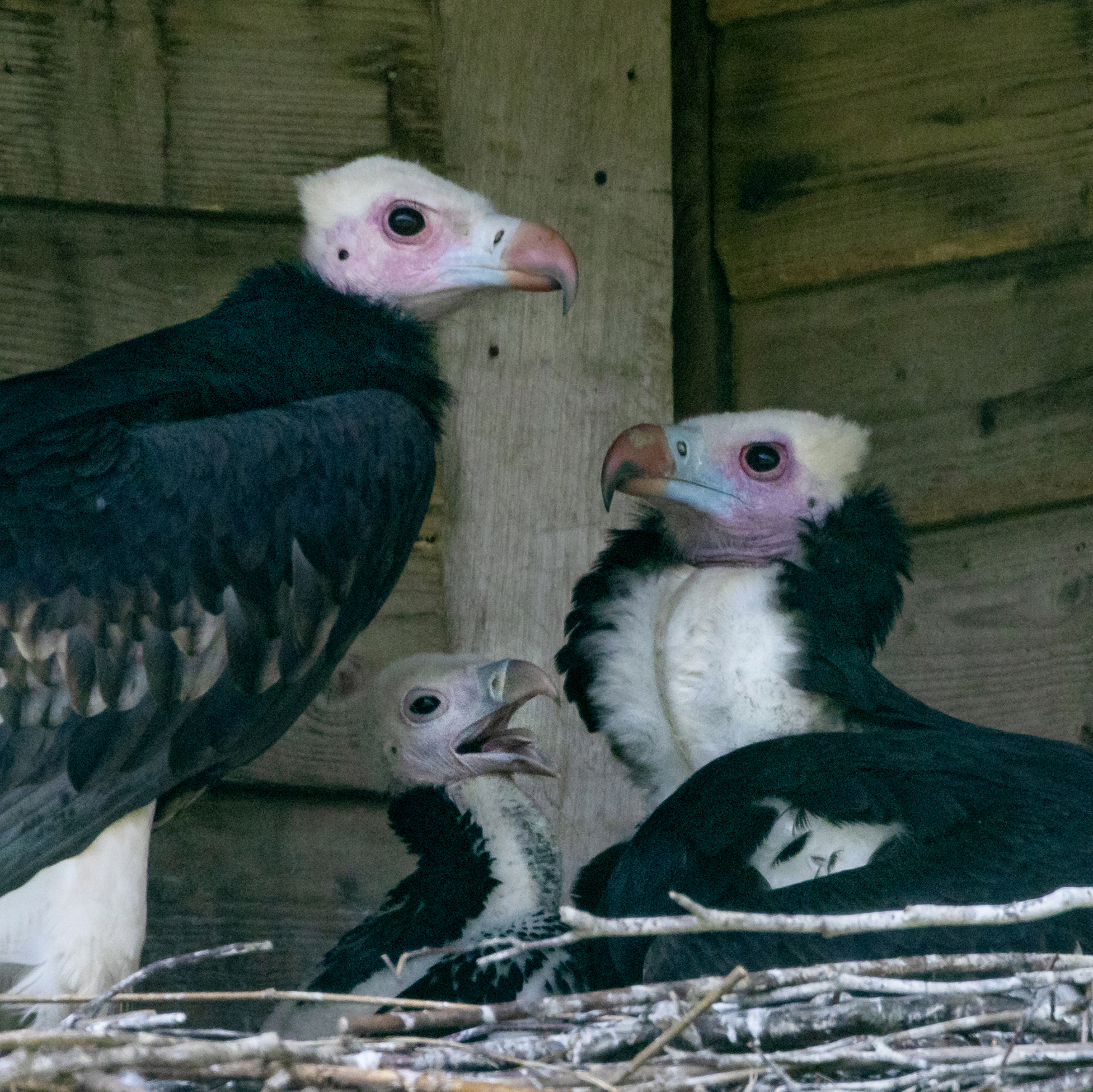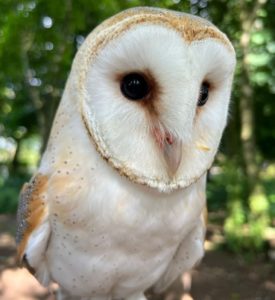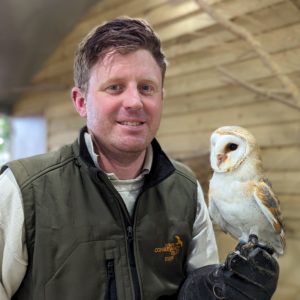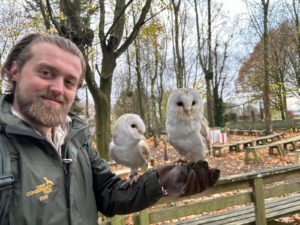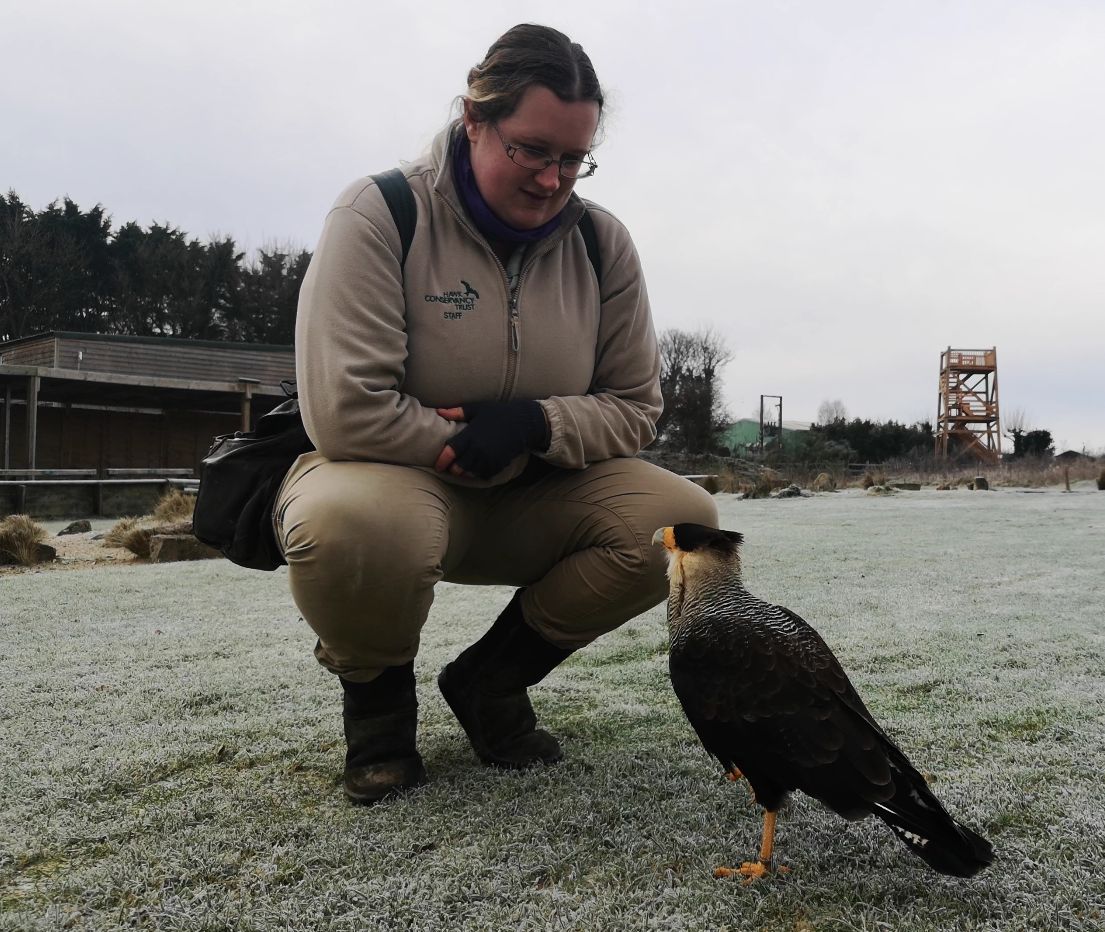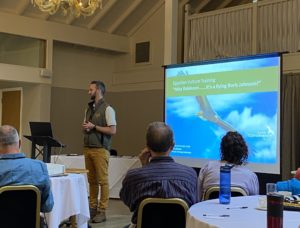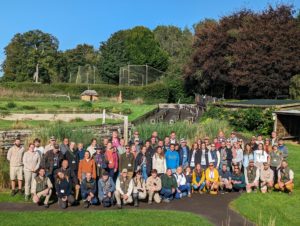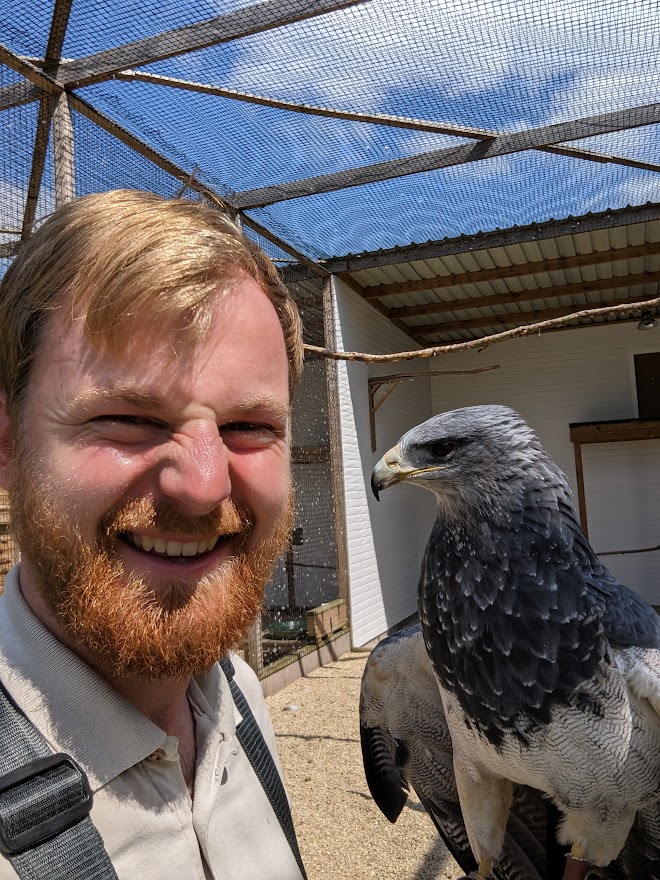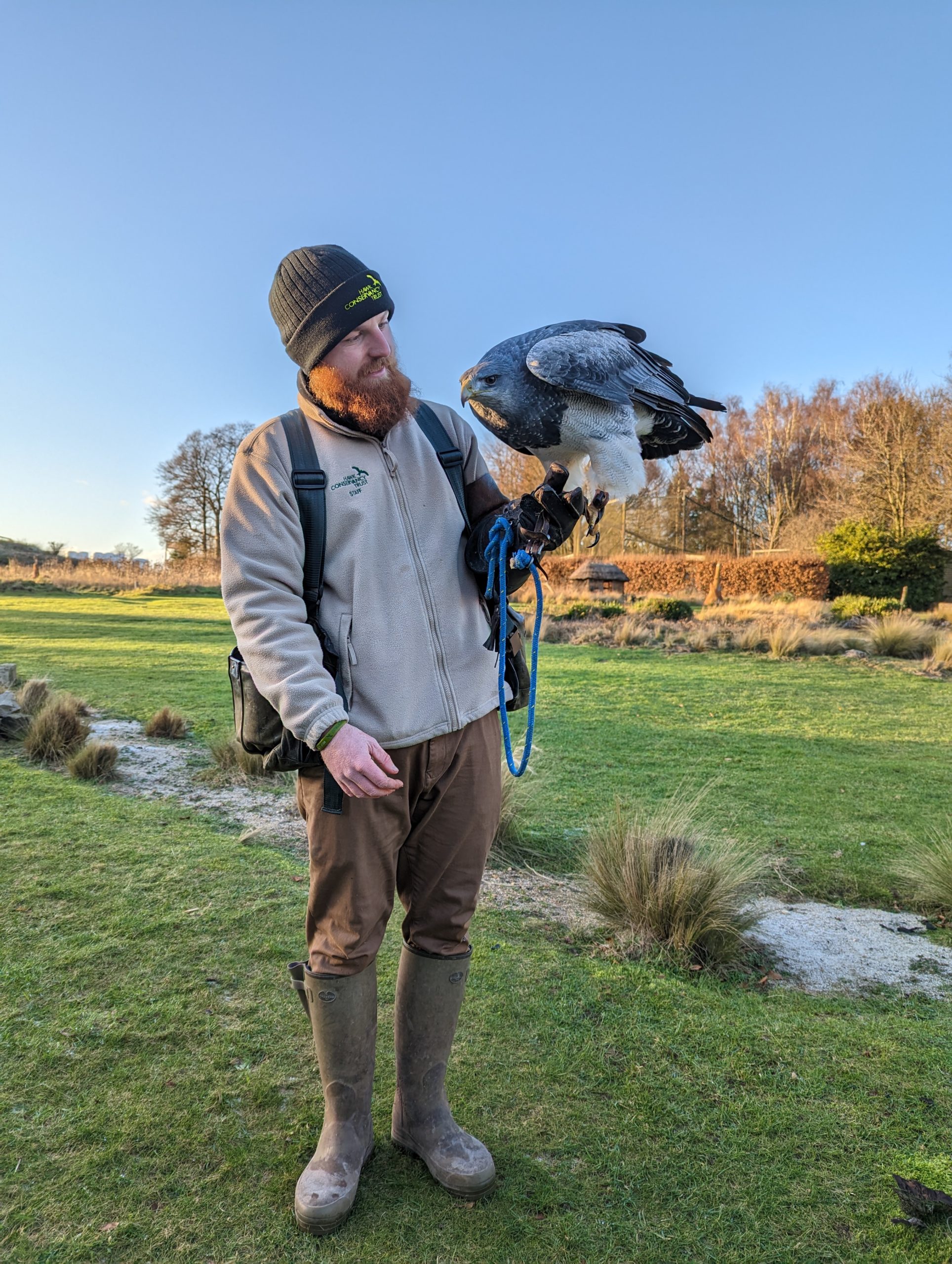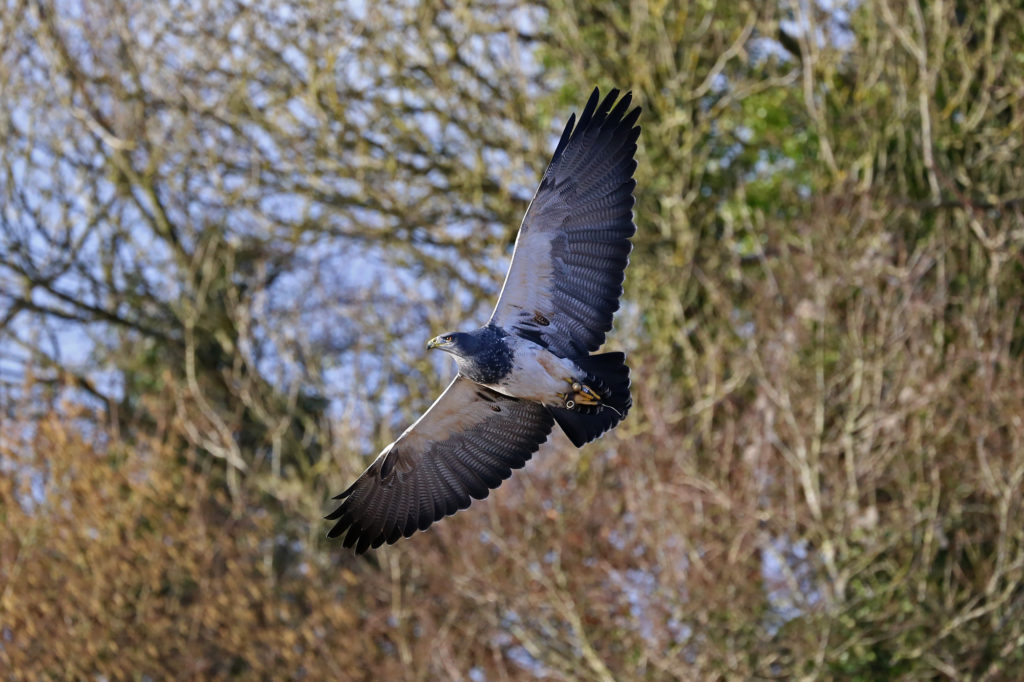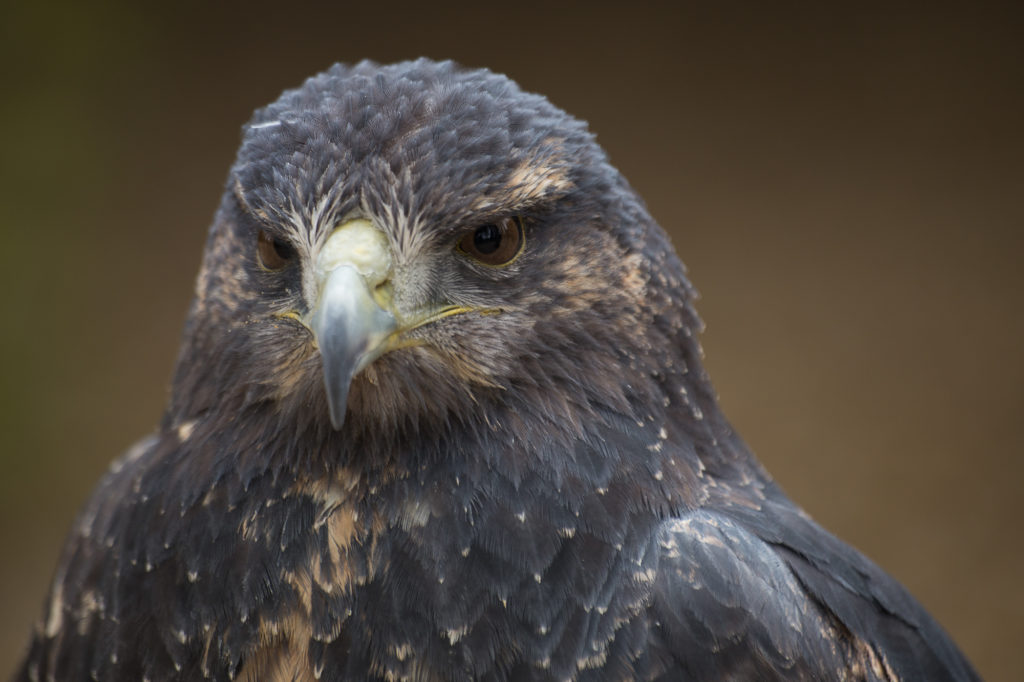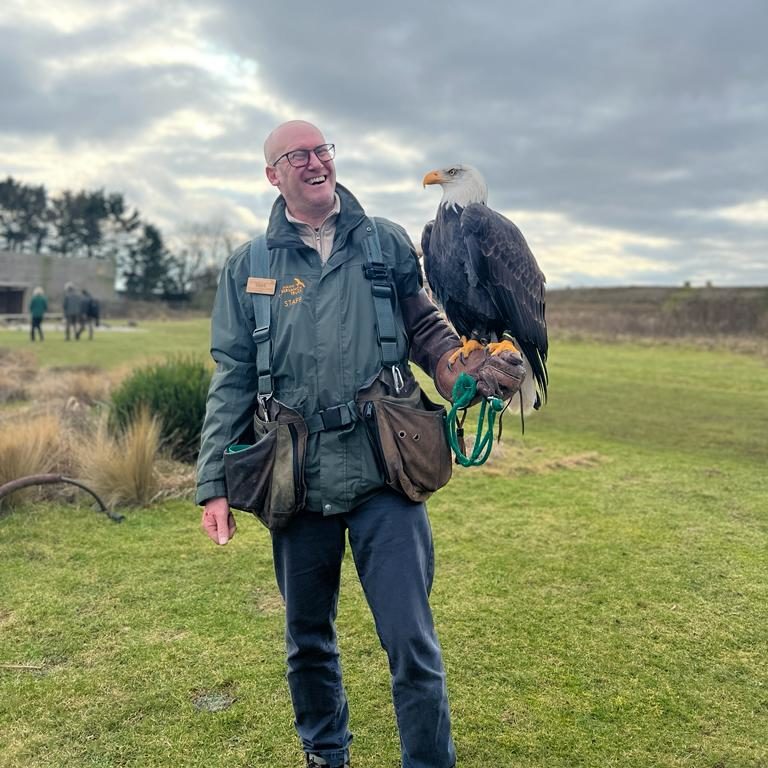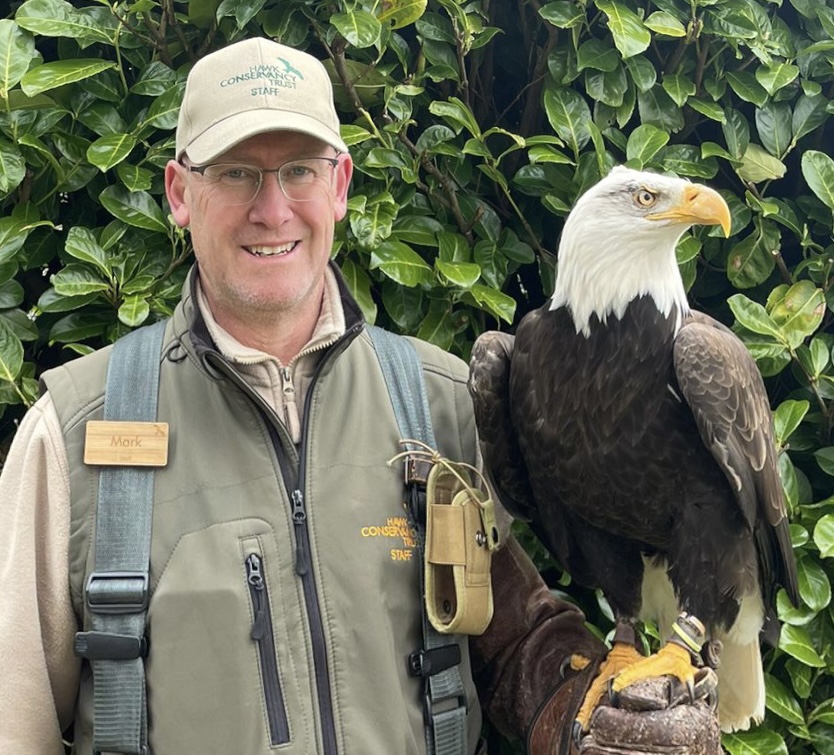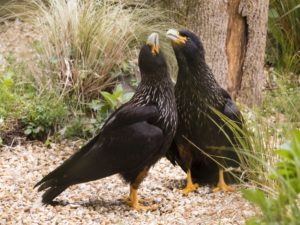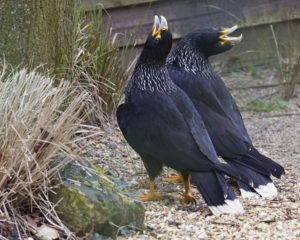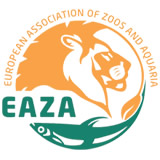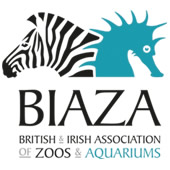If you’ve ever been lucky enough to step into our burrow on a Meet the Burrowers VIP Encounter, you will have become closer than you might have expected to our cheeky team of Burrowing Owls! Someone who knows these owls better than most is Bird Team member Patrick King, who heads up the Burrowing Owl section at the Trust. We heard from Patrick what it’s like working alongside these mischievous birds.
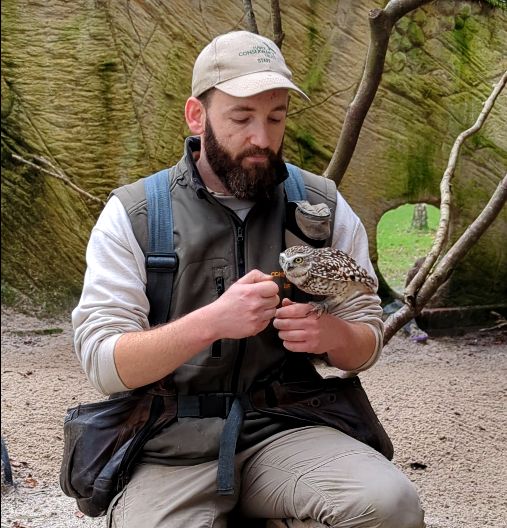
“No day is quite the same with our wonderful Burrowing Owl squad! As a smaller, more delicate species, our Burrowing Owls have an overnight bay that they can keep warm in. My first job in the morning is to check on the owls – what a way to start the day! I usually walk in, turn the lights on and say good morning to each owl, checking to make sure they’re ready for the day ahead.
At this point in the day they’re really animated – they know breakfast is coming! But first things first, each owl is weighed to make sure they’re as fit and healthy as can be. One by one the owls come out of their bay and sit on the scales before heading into their cosy travel box and tucking into some food.
Once they’ve had time to eat their breakfast, they are picked up in their travel box and carried to their aviary, which I have prepared for them earlier. Once in the aviary, they’re free to chill out and do what they’d like, which is usually having a good dig! Diamondback and Coral have a routine which they seem to enjoy carrying out every day, where they take a dip in their water bowl, drink some water together, and spend a good ten minutes preening!
While they relax in the aviary, I then have the important but unglamorous job of cleaning out their night bays. Burrowing Owls by nature tend to burrow, which means there’s usually a bit of work to do to clean up their mess!
I love working with all of our Burrowing Owls. Amongst the group of six there’s a whole mix of personalities. It’s nice to have the sense that the feeling is mutual – this group seem to have taken a liking to me too, and there’s a mutual trust between us all. They are such quirky little birds, and I could honestly watch them for hours to see all their funny antics. I love watching people meet them all in our Meet the Burrowers VIP Encounters – it’s nice to see how captivated people can be by such little birds.”
Meet Diamondback
“Diamondback is a laid back chap and a really lovely owl. He’s fairly reserved, so keeps himself out of trouble. Often when I am working in their aviary he will come up to say hello, politely getting his beak stuck in to find out what I’m up to. Sometimes he even flies up to land on my shoulder while I am working! His favourite thing to do is explore what’s in the buckets I carry – usually just tidied away sticks and leaves, but it fascinates him nonetheless. Diamondback and Coral are a close pair which is always lovely to see.”
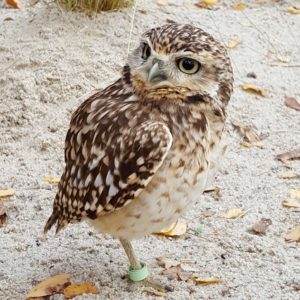
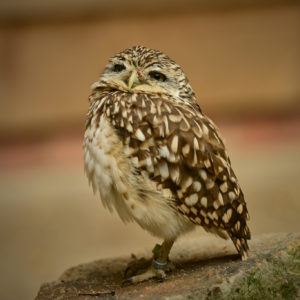
Meet Coral
“I would describe Coral as a bit of a rogue. She is a lovely little owl, but does what she wants and when she wants to do it! Once she’s put her mind to something, there’s no convincing her otherwise. During our Meet the Burrowers VIP Encounters Coral can be one of the most engaging owls, landing all around and on our guests to say hello. However, she can also be completely uninterested, perfectly happy to make a brief appearance before settling down to chew on some grasses. Speaking of which, we have recently discovered her complete fascination for lettuce, which we’re working to capture on camera as it’s just so unique! She does also have a close bond to Diamondback, and looks out for him if Sidewinder gets a bit bolshie.”
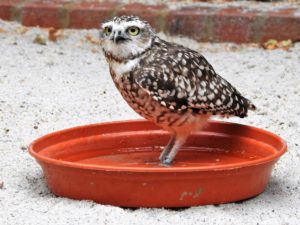
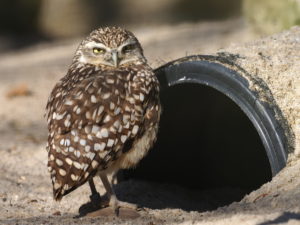
Meet Sidewinder
“Sidewinder is definitely the most confident member of the team. He thinks he runs the entire Hawk Conservancy Trust, let alone the Burrowing Owl troop! He is the largest of our Burrowing Owls, and apparently knows it. You’ll often hear him demonstrating his territorial call, showing off to anybody nearby just how amazing he is. Sidewinder certainly lives up to his Burrowing Owl name – he is the biggest digger of the group. He is always working on a new tunnel, and no matter how many times I fill in the holes he makes there’s always another excavation of his to fill in at the end of the day!”
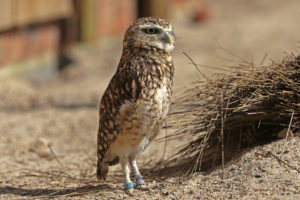
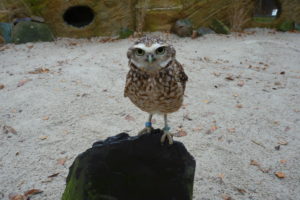
Meet Cottonmouth
“Cottonmouth is a very pleasant lady…when you’re in her good books! Now I’m out of earshot of her I can definitely describe her as a bit of a diva. If my cleaning in the aviary is not up to her standards she’ll make it very clear, gathering all of the missed helicopter seeds and any leaf litter she can find into a little pile to present back to me. She’s very investigative and likes to keep all the plants in their aviary looking to her liking, which in other words means she’ll happily shred and tear all the plants up if I don’t keep an eye on her!”
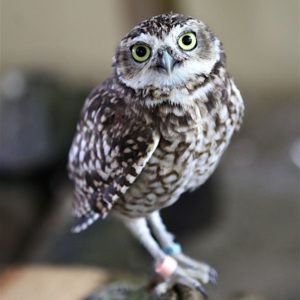
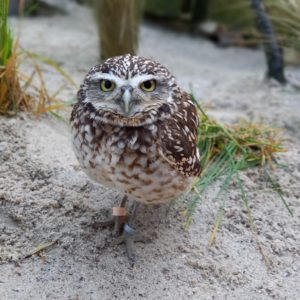
Meet Rattle and Rainbow
“Rainbow and Rattle are our younger pair of Burrowing Owls. They live in the separate half of the aviary to the rest of the team, as with all siblings there’d be too much arguing if they were all together!
Rattle reminds me very much of a young Sidewinder – an extroverted and dominant little owl. His favourite activity is shredding up the paper that we use to line his night bay. I can only describe his bay each morning as chaos! He shares these digs with Rainbow, who is a little more reserved than him. Not that that doesn’t mean Rainbow won’t often be found at the centre of mischief himself! They are both brilliant owls, and as our younger pair we are working alongside them at their own pace to introduce them onto quieter VIP Encounter sessions, and maybe more into the future!”
